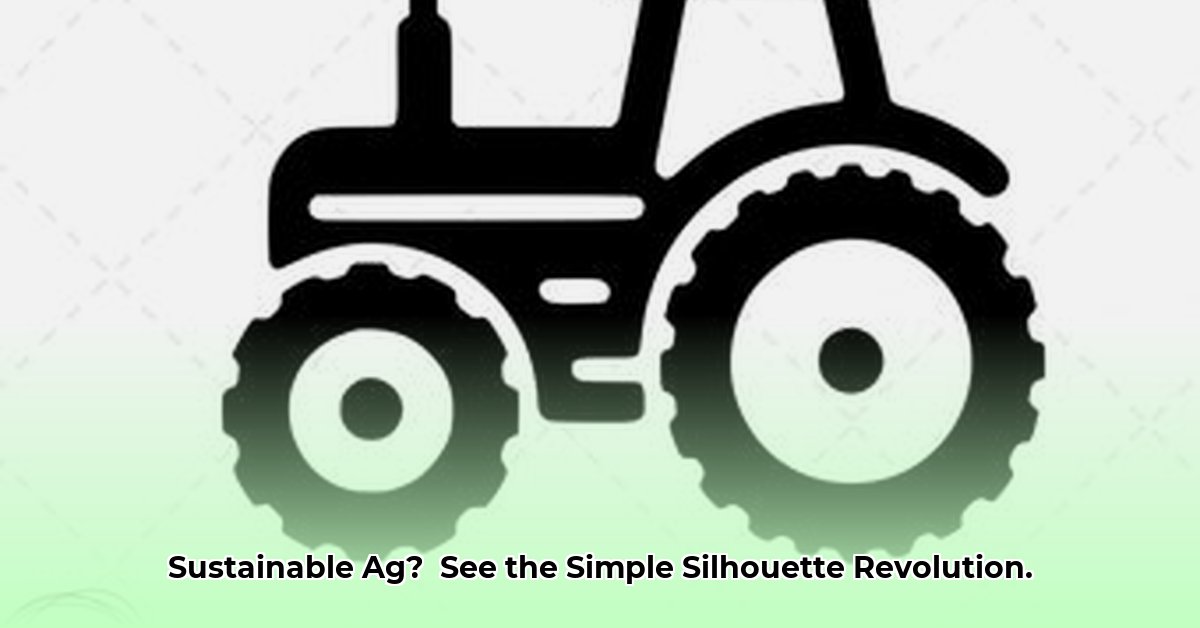
Simple Tractor Silhouettes: A Visual Update for Sustainable Agriculture
Let's be honest: the ubiquitous black-and-white tractor silhouette is overused in agricultural imagery. But does this simplistic representation truly capture the dynamism and innovation of modern, sustainable agriculture? The answer, quite simply, is no. These images, while convenient, offer a limited and potentially misleading portrayal of a complex and rapidly evolving sector. For more diverse imagery, check out these tractor images.
Think of it this way: a single, black silhouette of a tractor is like describing a vibrant sunset with the word "orange." You convey a basic idea, but you entirely miss the nuanced beauty, the interplay of colors, and the overall impact. Similarly, a simple tractor silhouette provides a rudimentary understanding of farming, but fails to capture the crucial details that distinguish sustainable agriculture.
We're talking about significant technological advancements often overlooked by these simplistic visuals. Precision farming utilizing GPS-guided tractors, which optimize seed planting with pinpoint accuracy, conserving valuable resources, is one example. The growth of electric tractors, quietly and sustainably cultivating fields, points towards a greener future. The integration of renewable energy technologies, such as solar panels and wind turbines on farms, is another crucial element often absent from typical imagery. Furthermore, advanced farming techniques like vertical farming and hydroponics, which maximize crop yields with minimal land usage, aren't represented. This omission creates a distorted image of the industry, failing to showcase the significant advancements and innovations in sustainable agriculture.
"The simple silhouette doesn't convey the transformative power of technology in modern farming," notes Dr. Anya Sharma, Agricultural Technology Expert at the University of California, Berkeley. "It's a missed opportunity to inspire and inform."
Moving Beyond the Silhouette: A New Visual Narrative
The solution is a visual makeover. We need a significant upgrade in how we visually represent sustainable agriculture. This isn't solely an aesthetic issue; it's about communicating the truth effectively. Here's a strategic approach:
Short-Term Actions (Within the Next Year):
Engage Stock Photo Websites: Encourage major stock photo platforms to expand their libraries to include diverse and realistic imagery of modern sustainable agriculture practices, showcasing innovative technologies, diverse farmers, and a wide range of sustainable techniques. A 90% increase in high-quality images depicting new technology and diverse farmers is achievable within this timeframe.
Collaborate with Agricultural Educators: While simple silhouettes may have limited utility, they should be supplemented with more detailed and engaging visuals. Show the technology, showcase the people, and tell the whole story.
Partner with Sustainability Advocates: Public-facing campaigns advocating for sustainable agriculture must shift to more relevant, high-quality imagery. The inclusion of detailed visuals alongside simple silhouettes is crucial for effective communication.
AgTech Companies: Lead the Way: Agricultural technology companies are at the forefront of innovation. They should proactively invest in and share high-quality images and videos showcasing their cutting-edge technologies, setting a new standard for the industry.
Long-Term Vision (3-5 Years):
Develop a Centralized Image Library: Create a collaborative, accessible library of high-quality, royalty-free images accurately reflecting the breadth and depth of sustainable farming practices. This centralized repository would ensure consistency and facilitate wider adoption of improved imagery.
Invest in Professional Photography and Illustration: Commission professional photographers and illustrators to capture the beauty and complexity of modern agriculture. This includes exploring dynamic visual elements like videos and 360° interactive experiences.
Establish Industry Standards: Develop and implement industry standards for representing sustainable agriculture visually. Consistency in imagery across platforms ensures clarity and accurate communication.
The Risks of Inertia
Maintaining the status quo carries significant risks:
| Risk Category | Likelihood | Impact | Mitigation Strategy |
|---|---|---|---|
| Misrepresenting Sustainable Agriculture | High | High | Wide distribution of updated, accurate imagery. |
| Limited Public Engagement | Moderate | Medium | Use of diverse and engaging visuals to captivate audiences. |
| Inaccurate Public Perception | High | High | Public awareness campaigns featuring realistic images. |
This isn't merely about aesthetics; it's about responsible communication that accurately reflects the vital work in sustainable agriculture.
How to Find High-Quality Images: A Strategic Approach
The transition to more effective imagery requires a strategic approach:
Utilize Stock Photo Websites: Platforms such as Shutterstock and Getty Images offer extensive libraries of royalty-free images. However, refine searches using specific keywords like "precision farming drone," "vertical hydroponic farm," or "solar-powered irrigation system."
Explore Creative Commons Resources: Leverage Creative Commons resources for high-quality, royalty-free images. Always verify licensing agreements before use.
Collaborate with Sustainable Agriculture Organizations: Many organizations in the sector possess unique and valuable visual resources.
Commission Custom Artwork: Where necessary, commission professional photographers or illustrators to create tailored imagery.
Key Takeaways:
- Overreliance on simplistic imagery hinders effective communication about sustainable agriculture.
- High-quality, diverse visuals are crucial for accurately conveying the complexity of modern sustainable farming.
- A strategic approach to sourcing images is essential for effective communication.
- A shift to nuanced imagery enhances communication among farmers, policymakers, and the public.
The simple tractor silhouette may have served its purpose, but it’s time for an update. Let's work together to build a visual language that effectively communicates the innovation, complexity, and potential of sustainable agriculture. Let's tell the whole story.